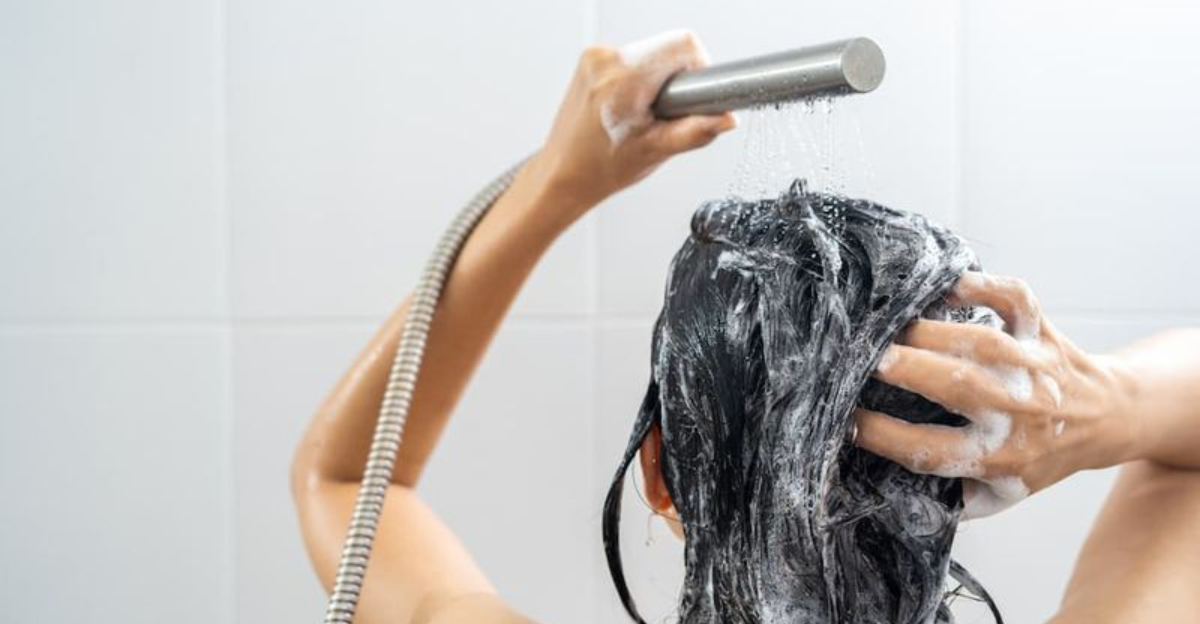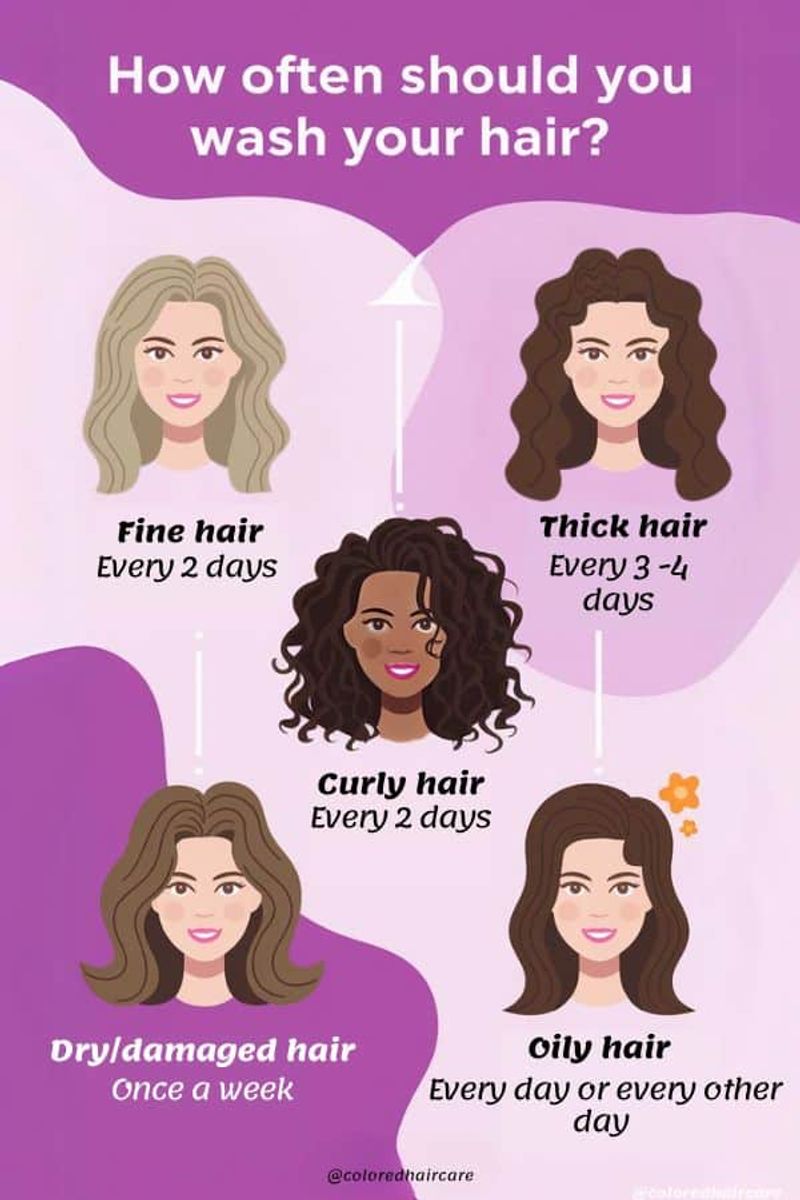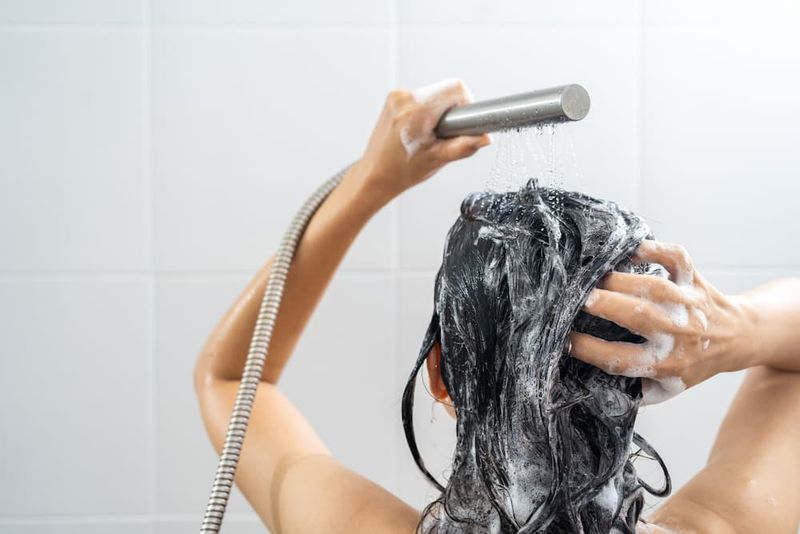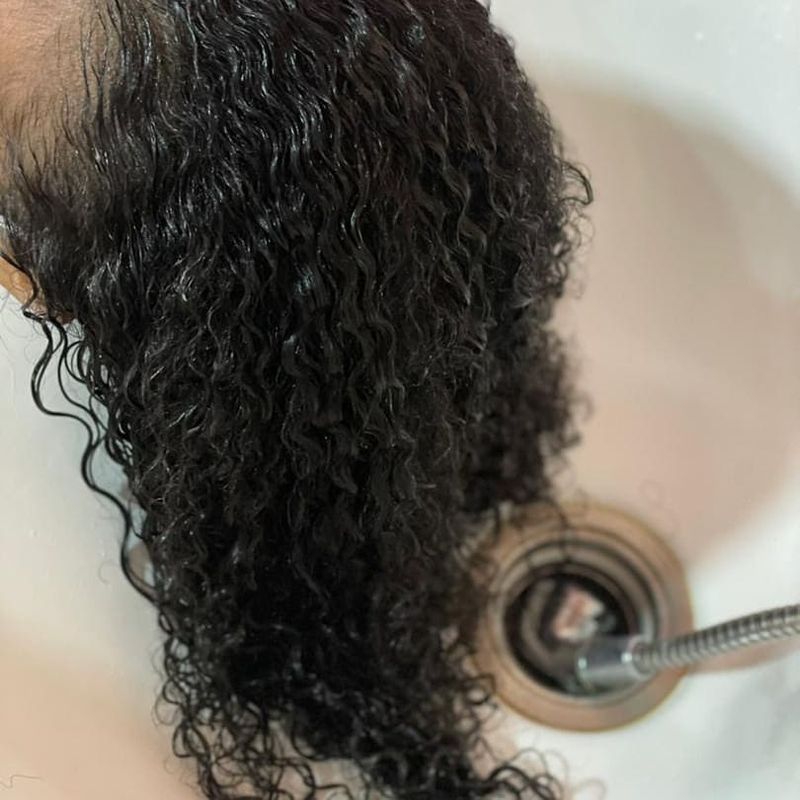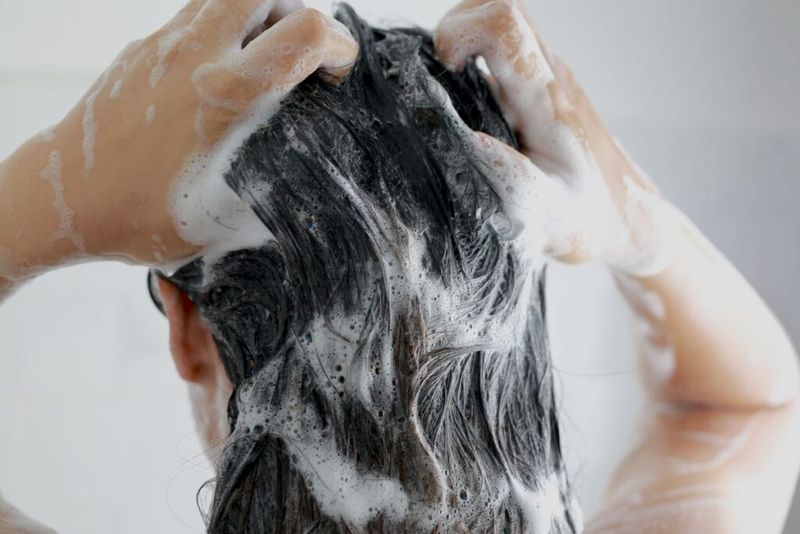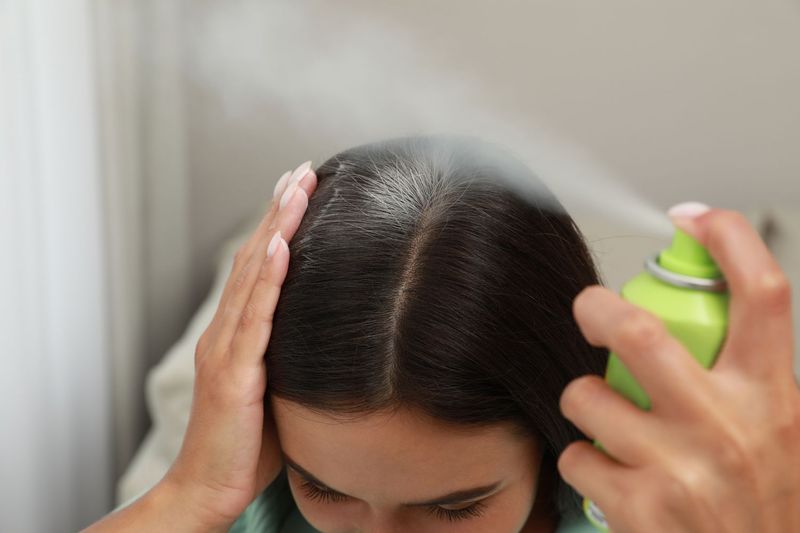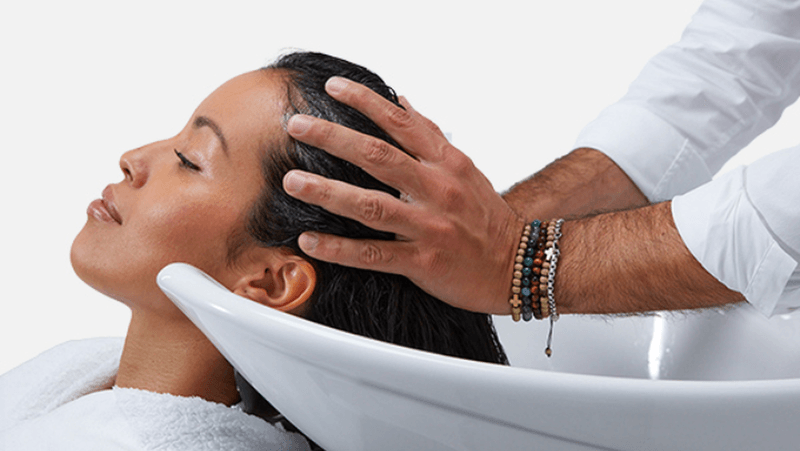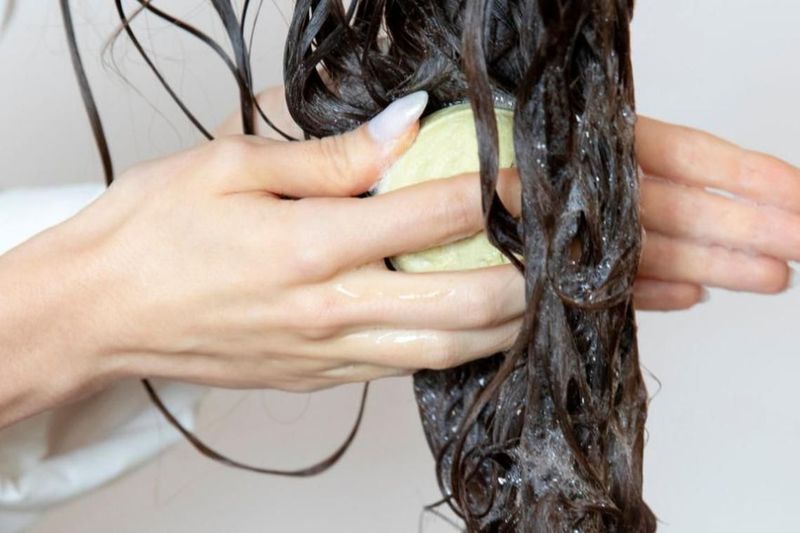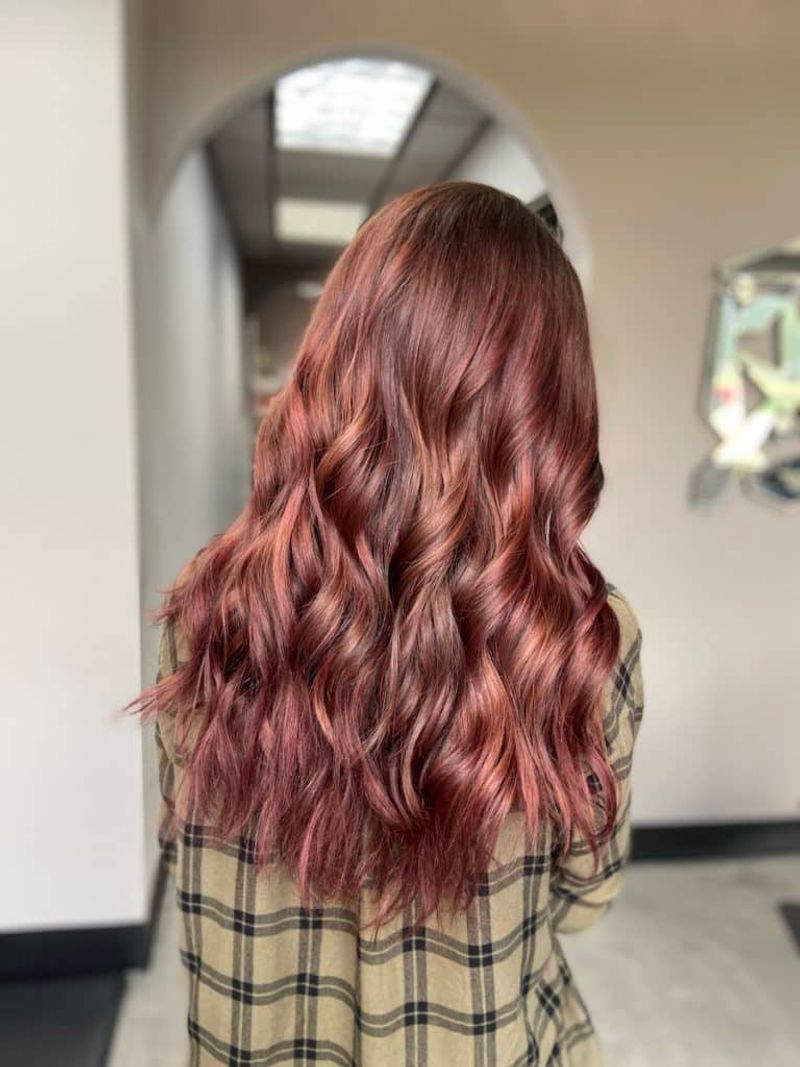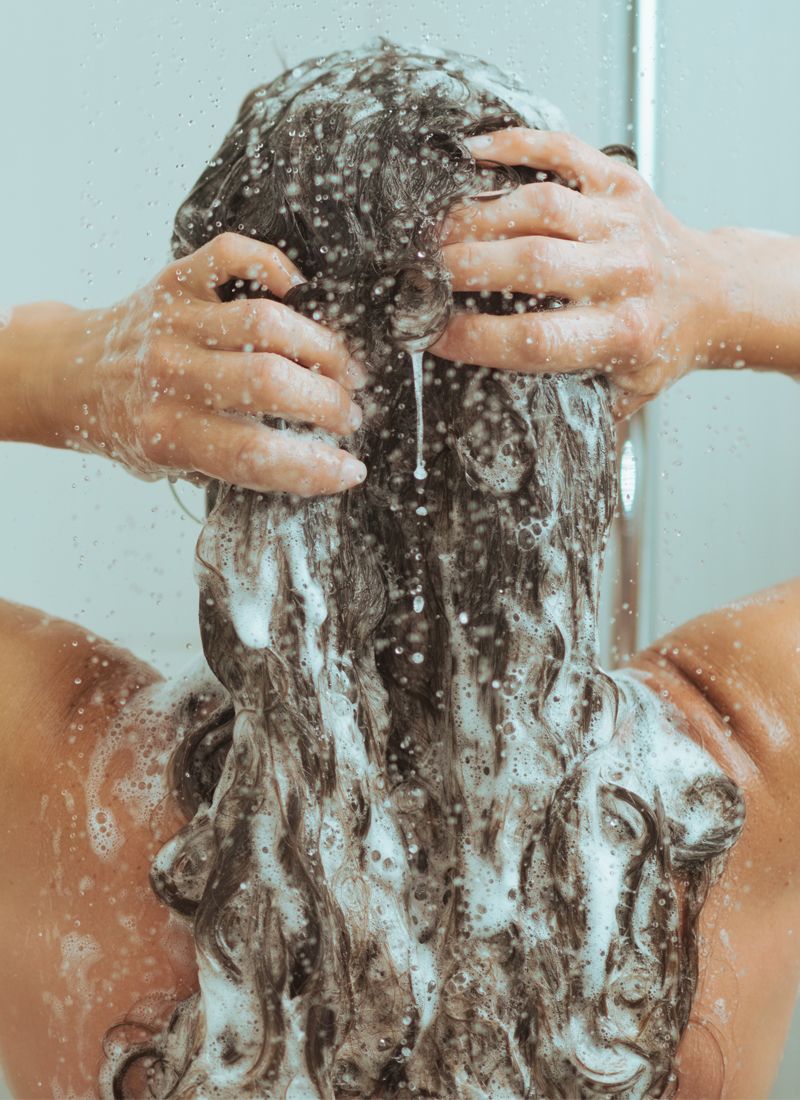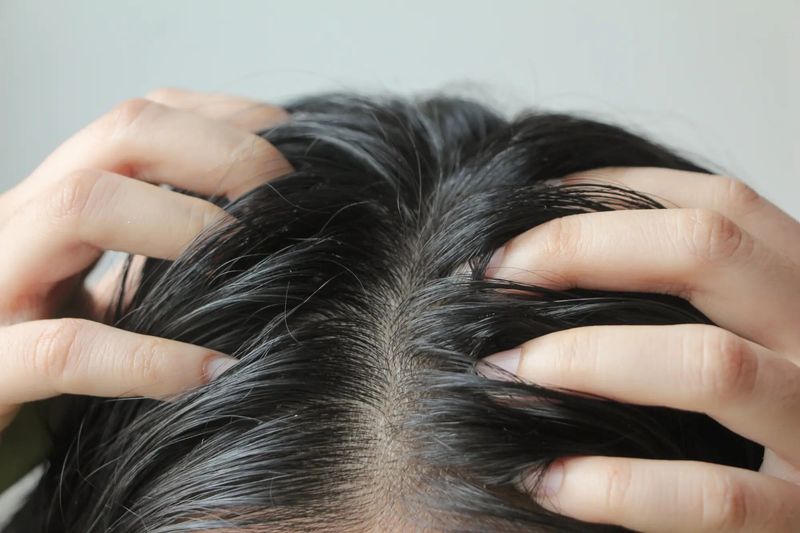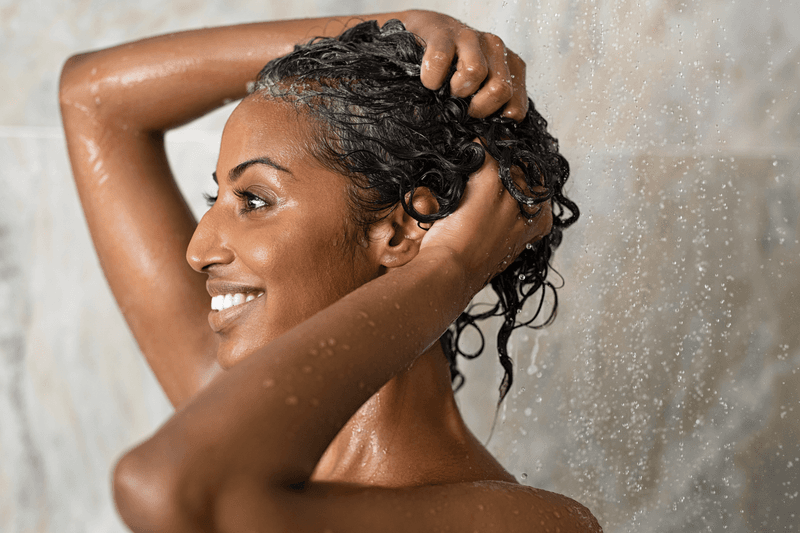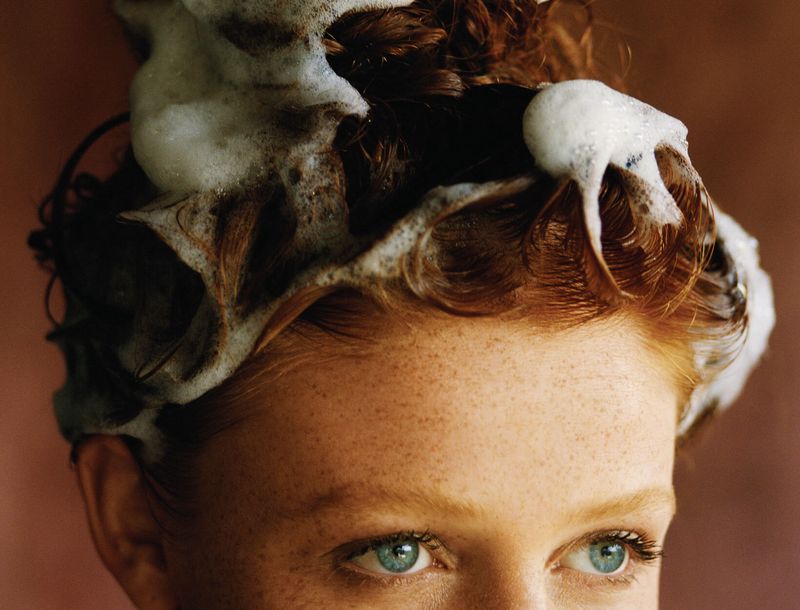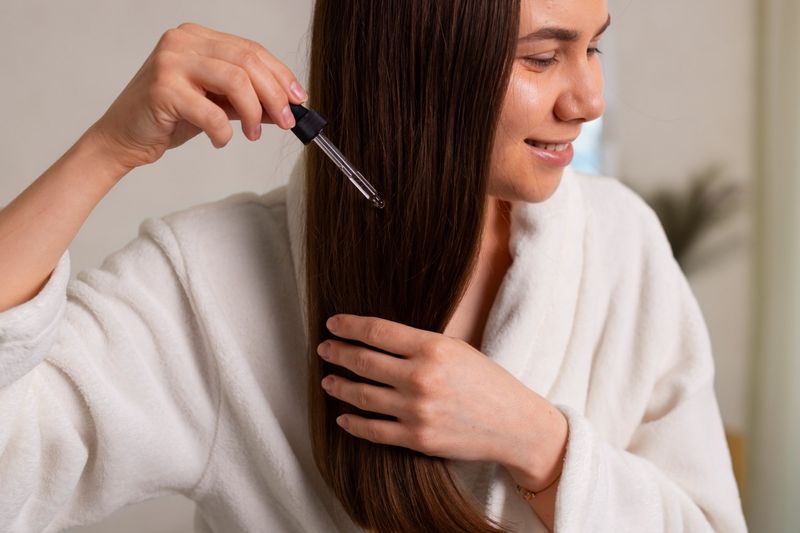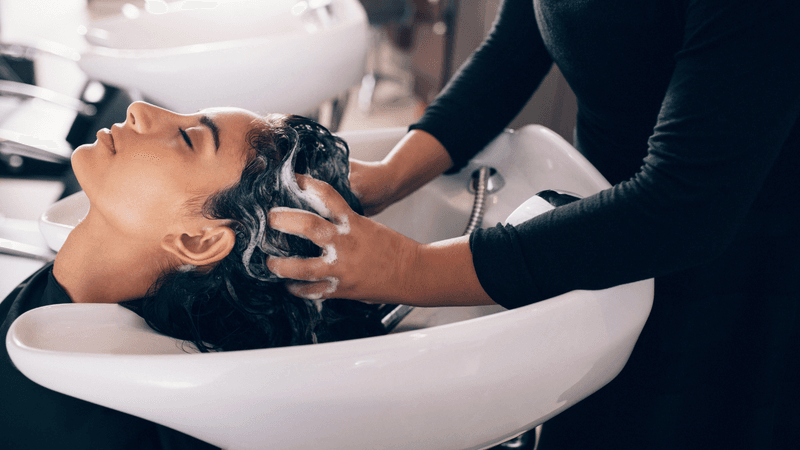Figuring out how often to wash your hair can feel like solving a complicated puzzle. Too much washing might leave your hair dry and brittle, while too little could lead to an oily, itchy scalp. The truth is, there’s no one-size-fits-all answer because everyone’s hair is unique. Hair experts have gathered their best advice to help you create a washing schedule that works perfectly for your specific hair type and lifestyle needs.
1. Conheça o seu tipo de cabelo
Your natural hair type plays the biggest role in determining your ideal wash frequency. Fine, straight hair tends to show oil faster and might need daily washing. Medium-textured hair often does well with washing every other day.
Thick, curly, or coarse hair typically needs less frequent washing—sometimes just once a week—because the natural oils take longer to travel down the hair shaft. African American hair textures usually benefit from the least frequent washing, often just once every 7-10 days.
Related: -7 Straight-Hair Problems No One Talks About And 8 Easy Fixes That Shine
Pay attention to how your specific hair responds rather than following generic advice. Your unique combination of texture, density, and oil production determines your personal best schedule.
2. Listen To Your Scalp
Your scalp sends clear signals about when it’s time for a wash. Itchiness, flakiness, or a feeling of heaviness often indicates built-up oils and product residue that need cleansing. Some scalps produce more oil than others, regardless of hair type.
Seasonal changes affect your scalp too. Many people notice increased oiliness during summer months when they sweat more, requiring more frequent washing. Winter’s dry air might allow you to stretch days between washes as your scalp produces less oil.
Rather than sticking to a rigid schedule, learn to recognize when your scalp feels uncomfortable—that’s your cue that it’s wash day, regardless of what the calendar says.
3. The Co-Wash Revolution
Co-washing—using conditioner instead of shampoo—has transformed hair care routines for many people with dry or curly hair. This gentle cleansing method removes just enough dirt without stripping natural oils. The technique works because conditioners contain mild cleansing agents that can lift away some impurities.
Start by thoroughly wetting your hair, then massage conditioner into your scalp using your fingertips (not nails). Focus on the scalp just as you would with shampoo, working in circular motions before rinsing thoroughly.
Most co-washers alternate between traditional shampooing and co-washing. Maybe you’ll shampoo once a week and co-wash twice, giving your hair gentle cleansing without dryness.
4. Shampoo Ingredients To Avoid
Not all shampoos are created equal. Harsh sulfates like sodium lauryl sulfate create that satisfying lather but can strip hair of natural moisture. These detergents might leave your hair squeaky clean yet paradoxically trigger more oil production as your scalp tries to compensate for the dryness.
Silicones present another potential problem. While they make hair feel temporarily smooth, they build up over time without proper removal. Look for ingredients ending in “-cone” on labels if your hair feels increasingly heavy or dull.
Alcohol-heavy formulas spell trouble for already dry hair types. Ingredients like ethanol or isopropyl alcohol appear high on ingredient lists of products that might leave your hair parched and frizzy after washing.
5. Activity Level Matters
Frequent exercisers face a unique hair-washing dilemma. Sweat creates a perfect environment for bacteria growth on your scalp, potentially leading to odor and irritation. High-intensity workouts that leave your head drenched typically call for a wash afterward.
Swimmers especially need to rinse chlorine or salt water from their hair promptly to prevent damage. Consider wearing a swim cap to minimize exposure. For daily gym-goers concerned about overwashing, try rinsing with plain water after lighter workouts and saving the shampoo for more intense sessions.
Dry shampoo can be your workout buddy on days between washes, absorbing excess oil and sweat while extending your wash schedule by a day.
6. The Dry Shampoo Debate
Dry shampoo offers a quick fix between washes, absorbing excess oil and adding volume. The powdery formulas work by soaking up sebum at the roots, creating the appearance of freshly washed hair. For busy mornings or post-workout touch-ups, it’s undeniably convenient.
However, relying too heavily on dry shampoo comes with downsides. The product can build up on your scalp, potentially clogging follicles and causing irritation. Some dermatologists warn that overuse might even contribute to hair thinning by disrupting the scalp’s natural balance.
Use dry shampoo strategically—perhaps once or twice between regular washes—and always brush it through thoroughly. Remember it’s a temporary solution, not a replacement for actual cleansing.
7. Age Changes Everything
Hair washing needs evolve throughout your lifetime. Teenagers often battle excess oil production due to hormonal changes, sometimes requiring daily washing. The sebaceous glands work overtime during these years, making hair appear greasy quickly.
As we move into our 30s and 40s, oil production naturally decreases for many people. What worked in your 20s might leave your hair feeling straw-like a decade later. Many find they can stretch their wash schedule longer as they age.
Post-menopause brings significant changes as hormonal shifts affect hair texture and density. Hair typically becomes drier and more fragile, often benefiting from less frequent washing—sometimes just once weekly—and more moisturizing treatments to combat newfound dryness.
8. Climate Considerations
Your environment significantly impacts how often you should wash your hair. Humid climates make scalps sweat more, potentially requiring more frequent washing to prevent bacterial growth. The moisture in the air can also reactivate styling products, creating unexpected stickiness or buildup.
Dry, arid conditions present the opposite problem. Desert dwellers often find their scalps and hair become parched quickly. In these environments, extending time between washes helps preserve natural oils that protect your hair from environmental damage.
City living introduces pollution concerns. Urban environments expose hair to particulate matter that clings to strands and can cause damage over time. People in heavily polluted areas might need more frequent cleansing to remove these environmental contaminants, regardless of their hair type.
9. Color-Treated Hair Needs Special Care
Vibrant hair color fades with every wash. Water alone can open the hair cuticle, allowing dye molecules to escape—especially hot water. Colored hair typically benefits from reduced washing frequency, sometimes just 2-3 times weekly, to preserve your investment and vibrancy.
When you do wash, water temperature matters tremendously. Cool or lukewarm water helps keep the cuticle sealed, trapping those precious color molecules inside the hair shaft. Hot water might feel good but essentially accelerates the fading process dramatically.
Choose shampoos specifically formulated for color-treated hair. These products typically have gentler cleansing agents and lower pH levels to minimize color loss. Some even contain small amounts of dye to refresh your color with each wash.
10. Hard Water Headaches
Mineral-heavy hard water creates unique hair washing challenges. The calcium and magnesium in hard water react with shampoo, preventing proper lathering and thorough cleansing. These minerals also build up on hair over time, creating dullness and a straw-like texture that no conditioner seems to fix.
People with hard water often need clarifying treatments more frequently to remove mineral buildup. Apple cider vinegar rinses (one tablespoon per cup of water) can help dissolve these deposits between regular washes. For serious cases, shower filter installation provides a more permanent solution.
If you notice white residue on shower walls or fixtures, your hair is likely suffering from the same mineral coating. Consider this environmental factor when creating your wash schedule.
11. Scalp Conditions Require Customization
Dandruff, psoriasis, and seborrheic dermatitis demand specialized washing routines. These conditions typically require medicated shampoos containing ingredients like zinc pyrithione, ketoconazole, or coal tar. Following your dermatologist’s recommendations trumps general hair washing advice.
The washing frequency might seem counterintuitive. While overwashing typically causes dryness, certain scalp conditions actually improve with more frequent cleansing to remove buildup of skin cells and control yeast growth. Your dermatologist might recommend daily washing initially, then a maintenance schedule.
Application technique matters tremendously. Medicated shampoos need direct scalp contact and adequate time to work—usually 3-5 minutes before rinsing. Focus the product on your scalp rather than hair length for maximum effectiveness against these challenging conditions.
12. The Double-Cleanse Method
Borrowed from skincare routines, double-cleansing has revolutionized hair washing for many people. The technique involves washing your hair twice during the same shower—first to remove surface dirt, oils, and product buildup, then again to actually clean the hair and scalp thoroughly.
For the first wash, use a small amount of shampoo focused mainly on the scalp and roots where oils accumulate. Rinse completely, then apply a second round of shampoo, working it through more thoroughly. This second application typically creates more lather since the surface grime has been removed.
This method works particularly well for those who use lots of styling products or stretch days between washes. The initial cleanse removes the product barrier, allowing the second wash to actually reach the scalp and hair shaft.
13. Nighttime Versus Morning Washing
The timing of your hair wash affects both styling options and hair health. Morning washers enjoy the benefit of fresh, clean hair for the day ahead without sleeping on damp strands. This timing works well for people with fine hair that gets flat overnight or those who shower as part of their wake-up routine.
Evening washing offers different advantages. Hair has hours to air-dry naturally, reducing heat styling damage. Night washing also removes the day’s pollutants, preventing them from transferring to your pillowcase and potentially causing skin issues.
For those with thick, coarse, or difficult-to-dry hair, evening washing prevents the morning rush with still-damp strands. Consider your hair type, styling needs, and lifestyle when deciding which schedule works best for your routine.
14. Seasonal Adjustments
Smart hair care means adapting your wash schedule with the changing seasons. Summer brings increased sweat, sunscreen use, and swimming, often necessitating more frequent washing. The humidity might also affect how your hair behaves between washes, sometimes causing unexpected frizz or flatness.
Winter’s cold, dry air creates opposite challenges. Indoor heating systems strip moisture from your environment and your hair. Many people find their scalps become flakier yet paradoxically less oily during winter months, allowing for more days between washes.
Seasonal product swaps support these adjustments. Lighter, clarifying formulas work well for summer’s excess oil and product buildup, while richer, more moisturizing options combat winter dryness. Don’t expect the same washing schedule to work year-round.
15. Travel Throws Off Your Schedule
Maintaining your regular hair washing routine becomes challenging when traveling. Different water quality in new locations significantly affects how your hair responds to washing. Hard water areas might leave your normally silky hair feeling stiff and dull despite using your regular products.
Climate changes during travel also impact your scalp’s oil production. Moving from a dry to humid environment (or vice versa) can throw your usual schedule into chaos. Many travelers notice their hair behaving completely differently within days of arriving at their destination.
Pack travel-sized versions of your trusted products rather than relying on hotel offerings. Consider bringing a clarifying shampoo for hard water locations and dry shampoo for unexpected oiliness. A small spray bottle with diluted apple cider vinegar helps combat hard water effects without taking up much luggage space.
16. Listen To Your Hairstylist
Professional hairstylists offer personalized washing advice based on their trained assessment of your hair type, condition, and styling needs. They can identify issues you might miss, like product buildup or early signs of damage from overwashing. Their recommendations reflect both their expertise and their hands-on experience with your specific hair.
During consultations, be honest about your current routine. Mention how often you actually wash (not what you think you should say), what products you use, and any concerns you have. This transparency helps your stylist provide truly customized advice.
Remember that stylists also consider your lifestyle when making recommendations. Someone with an intense workout schedule needs different advice than someone with a less active routine. Their guidance balances hair health with your practical daily needs.

